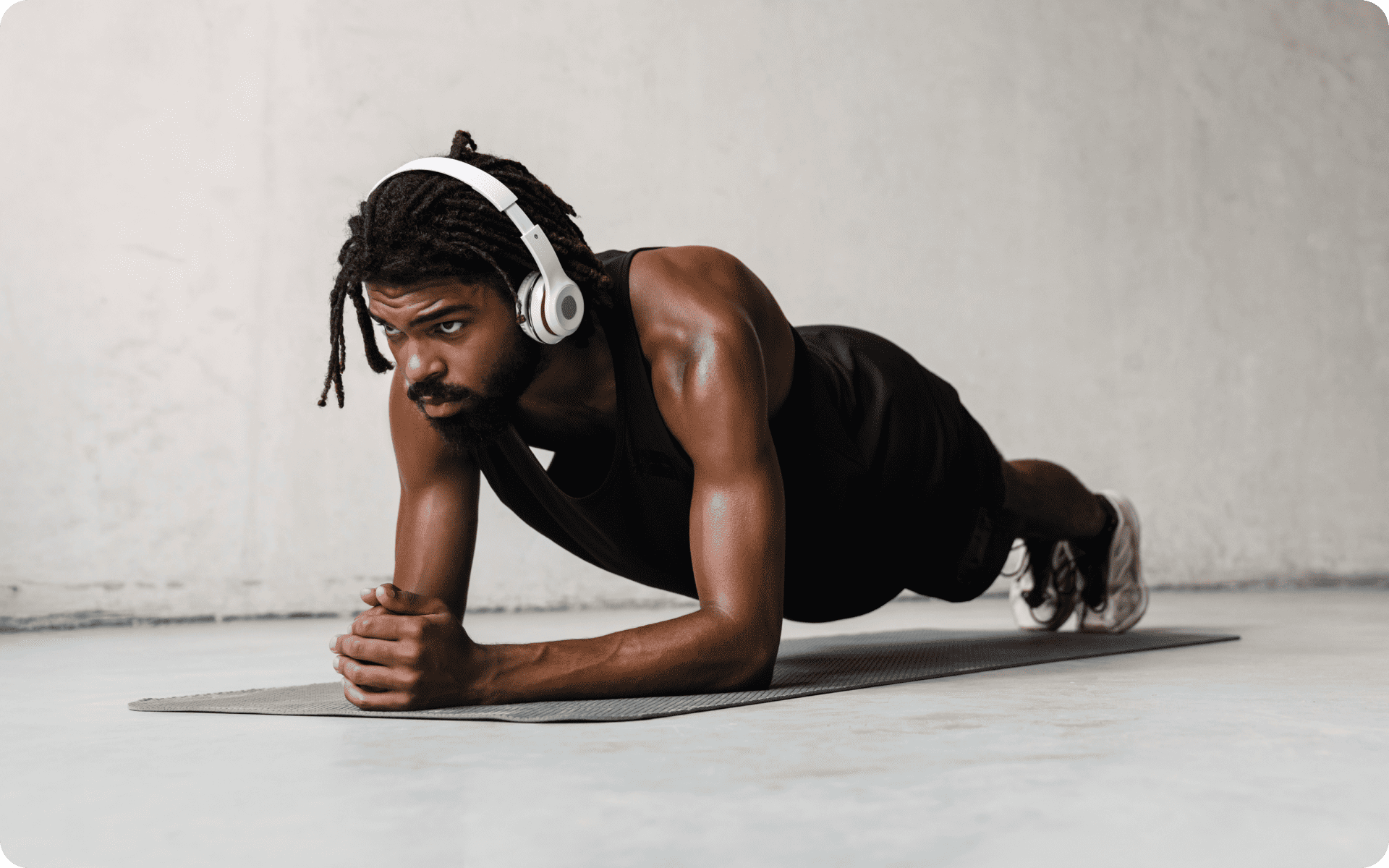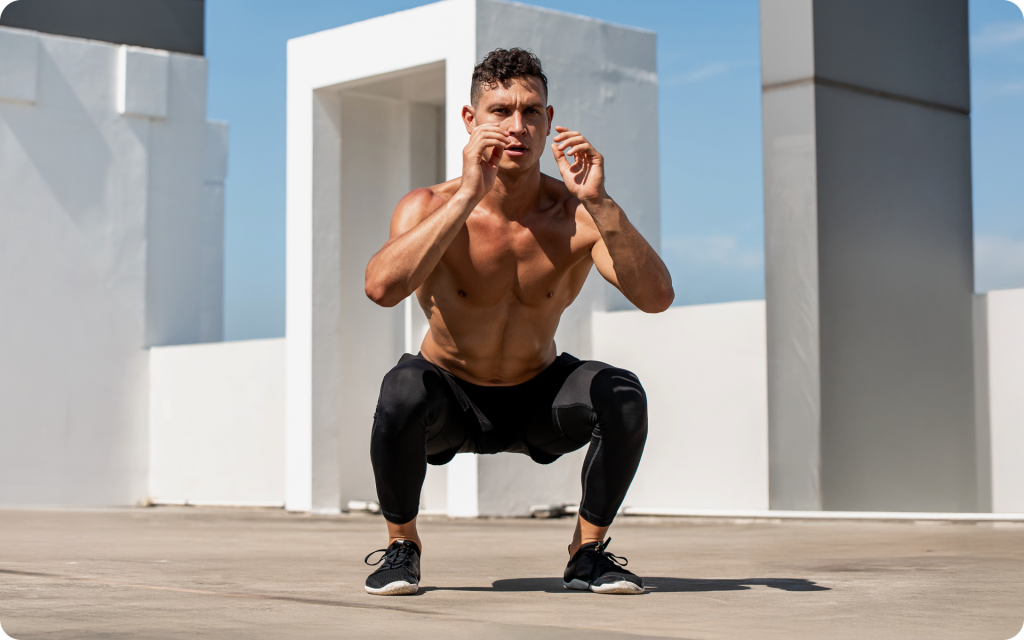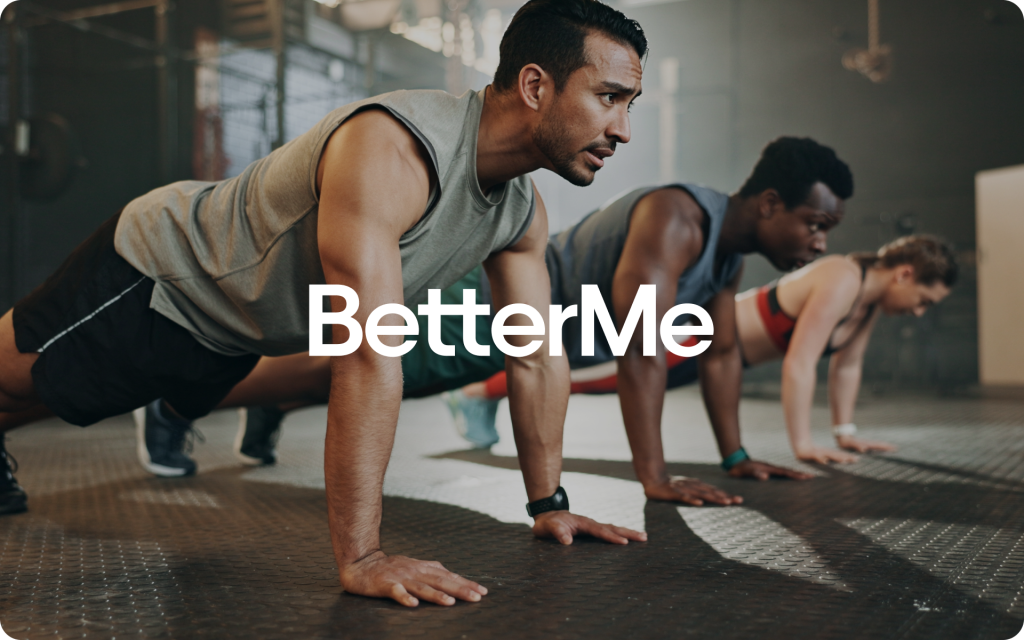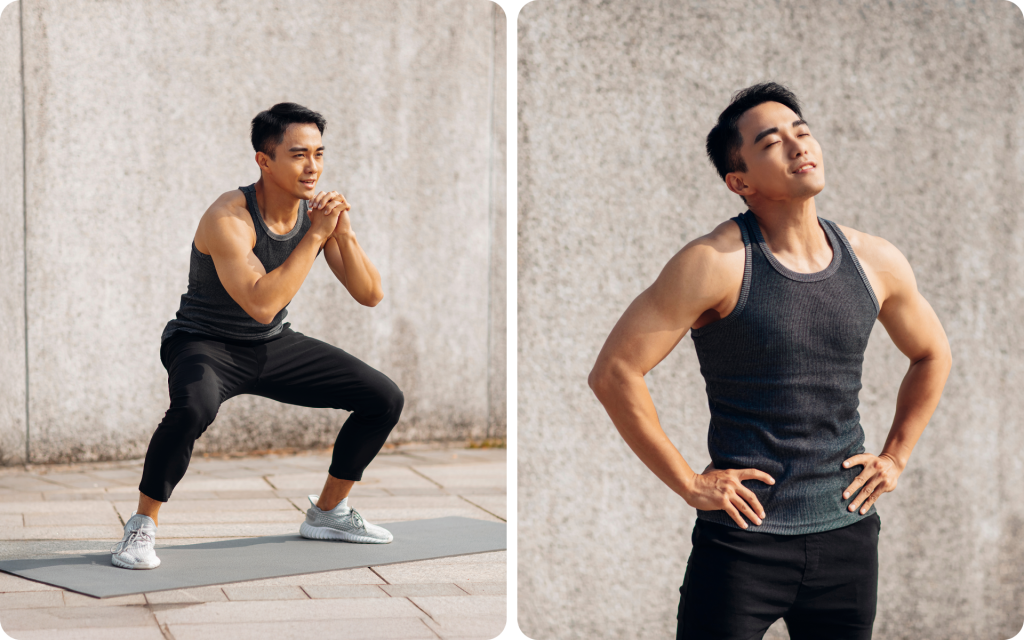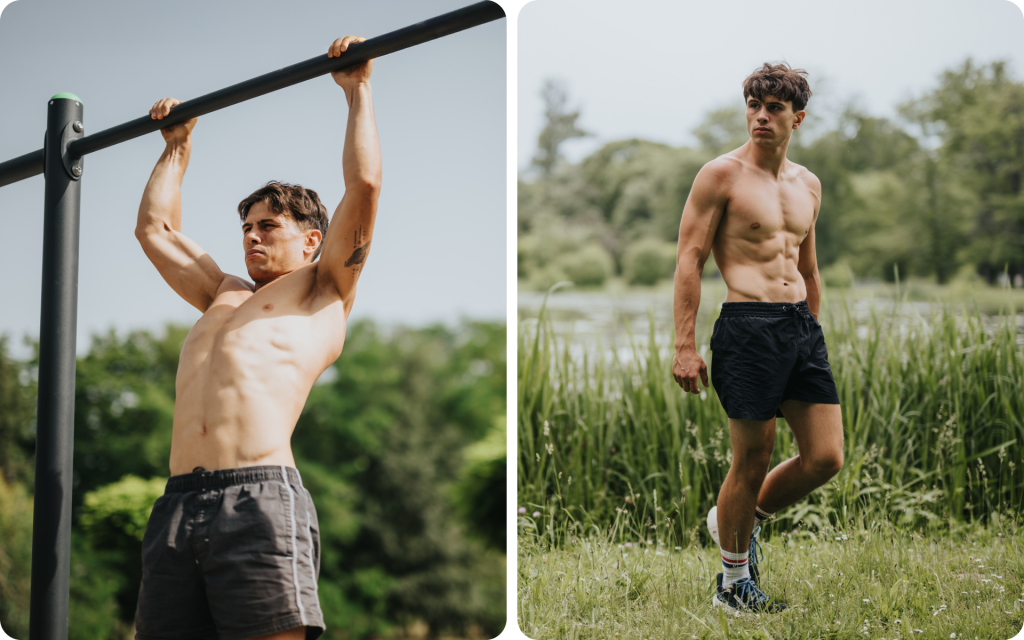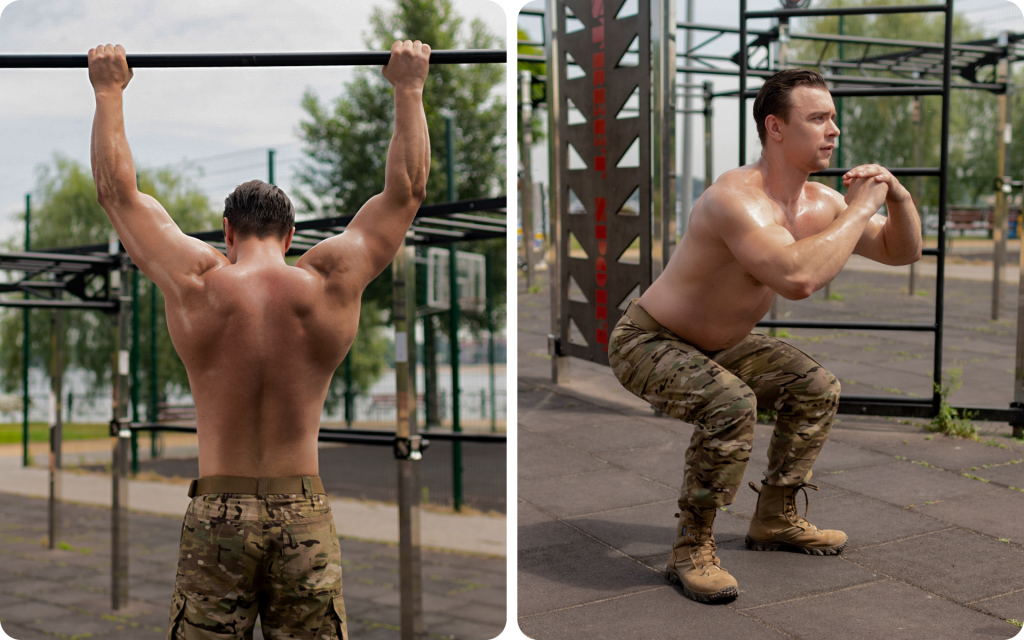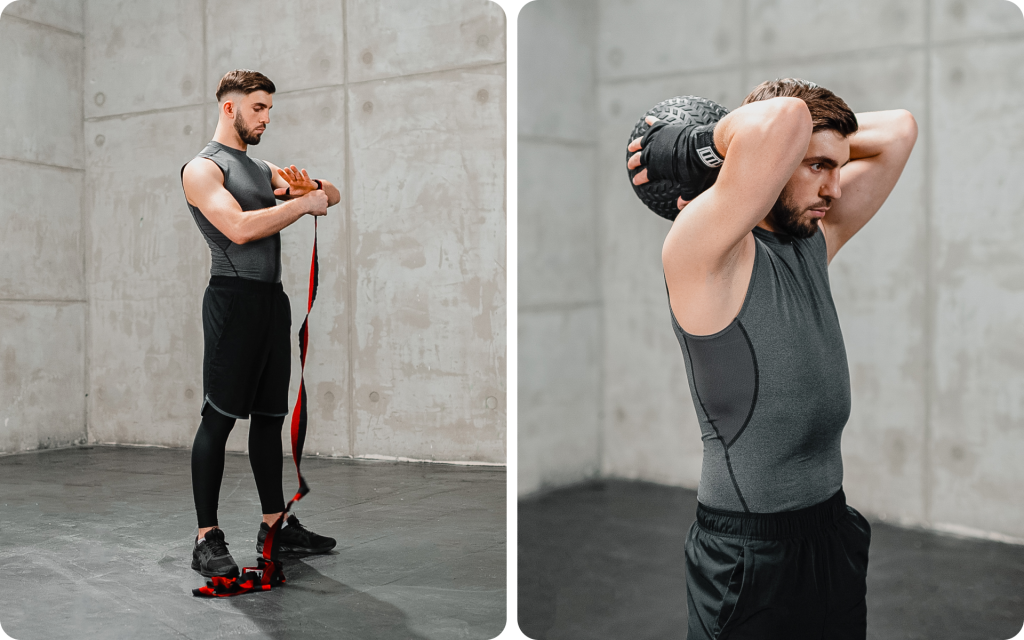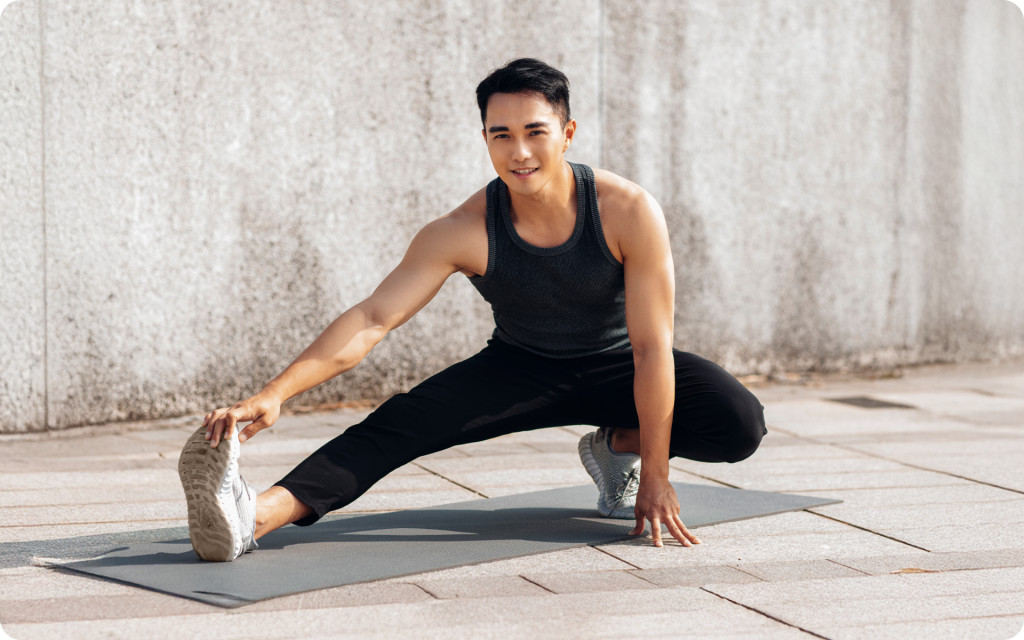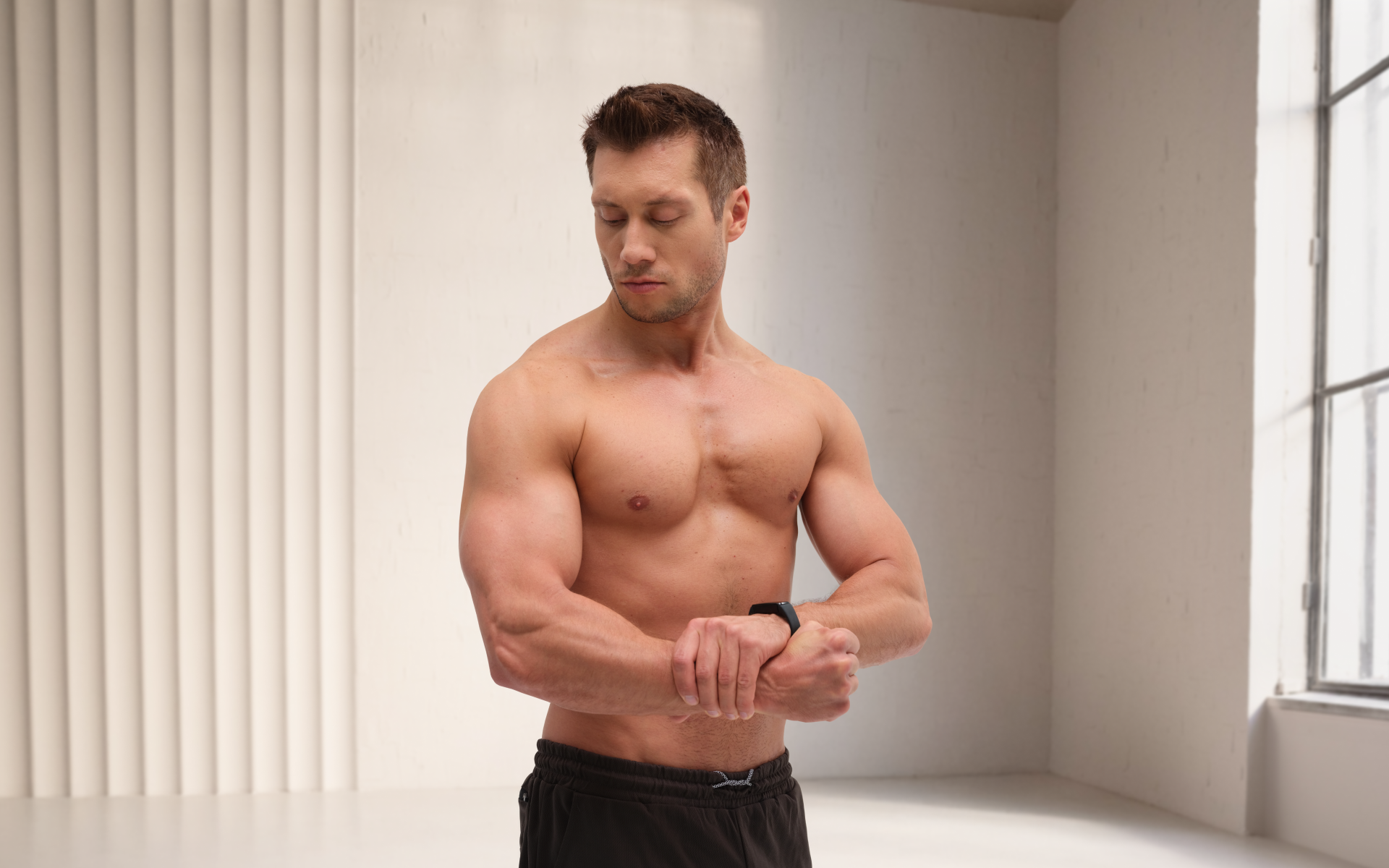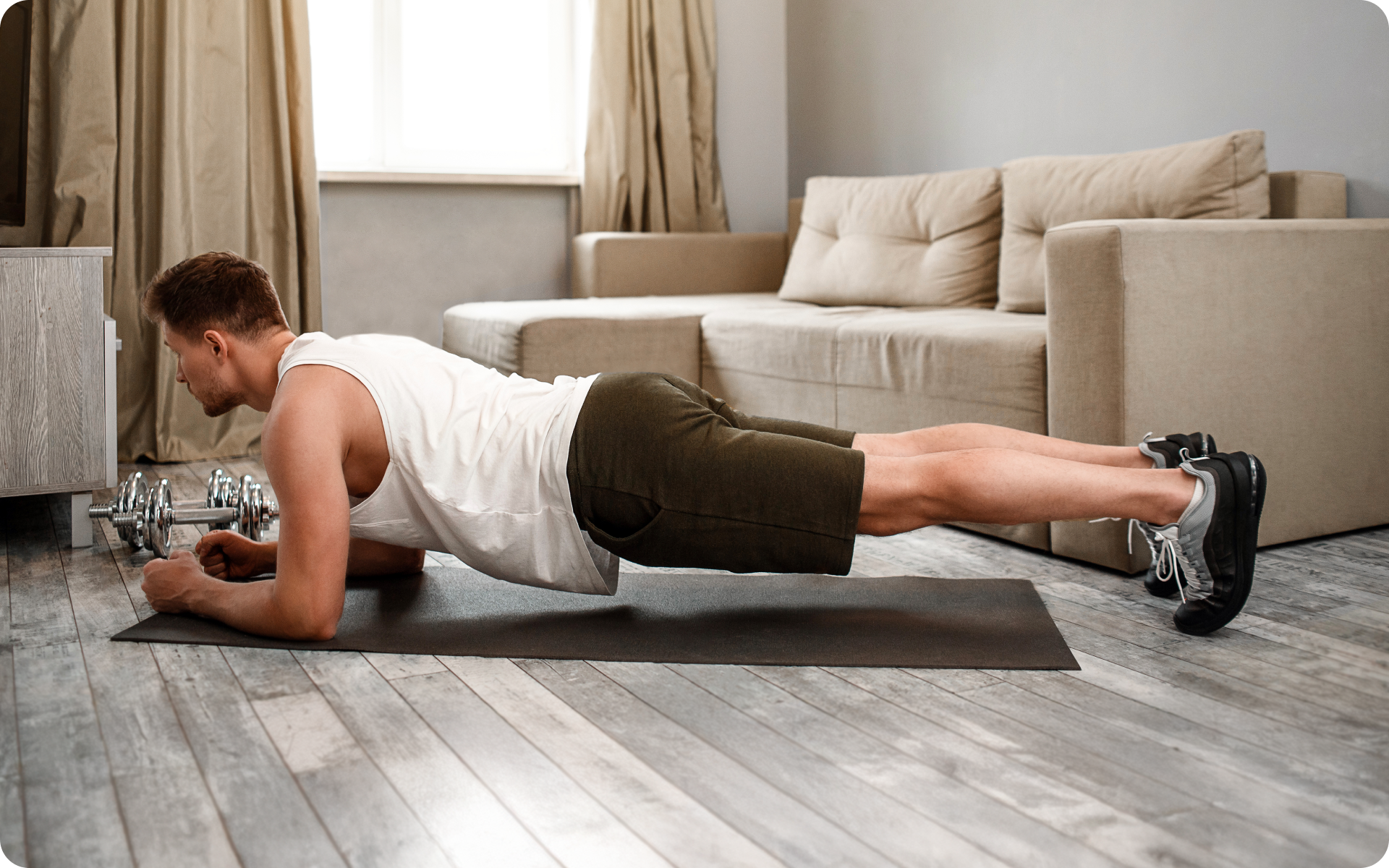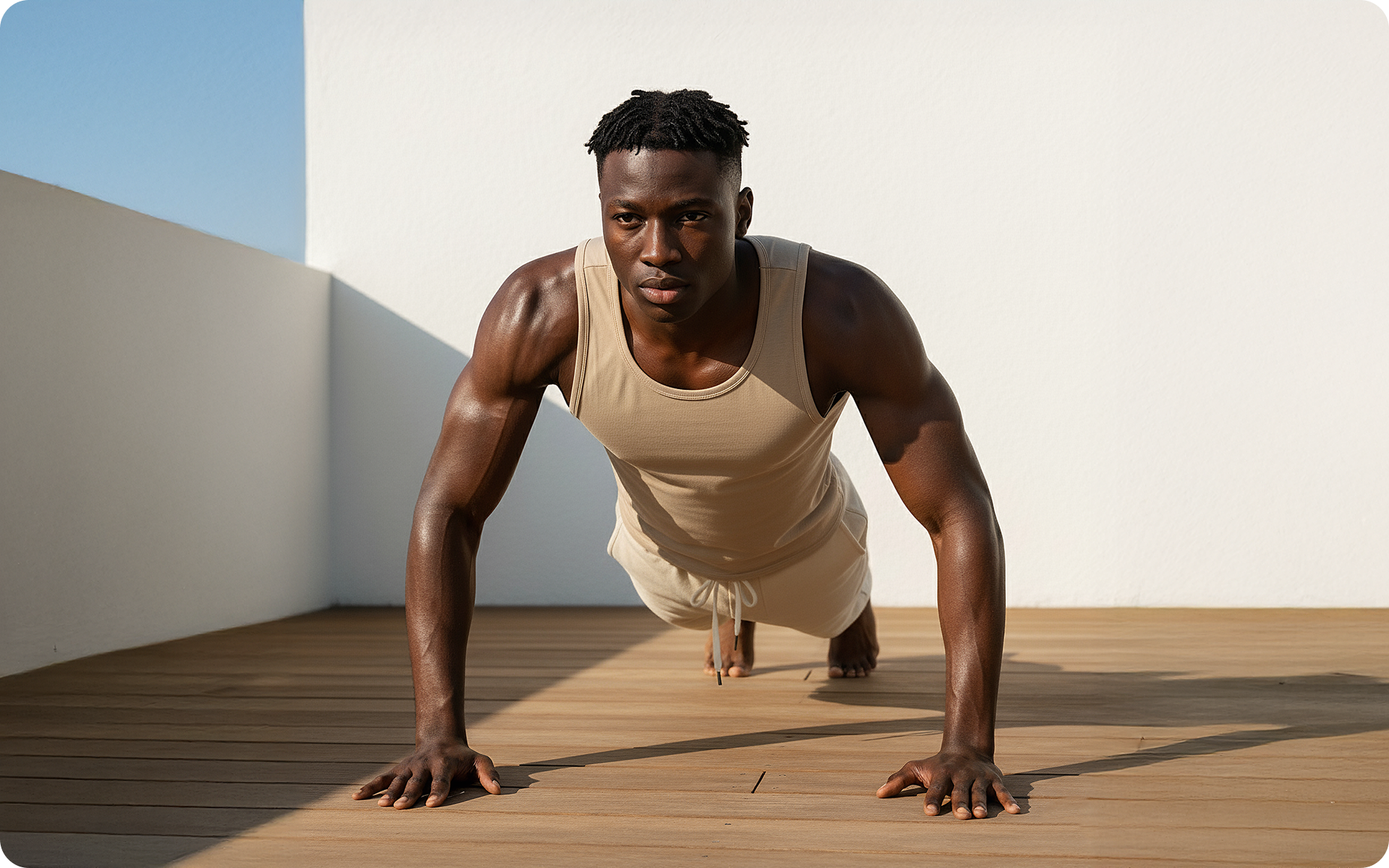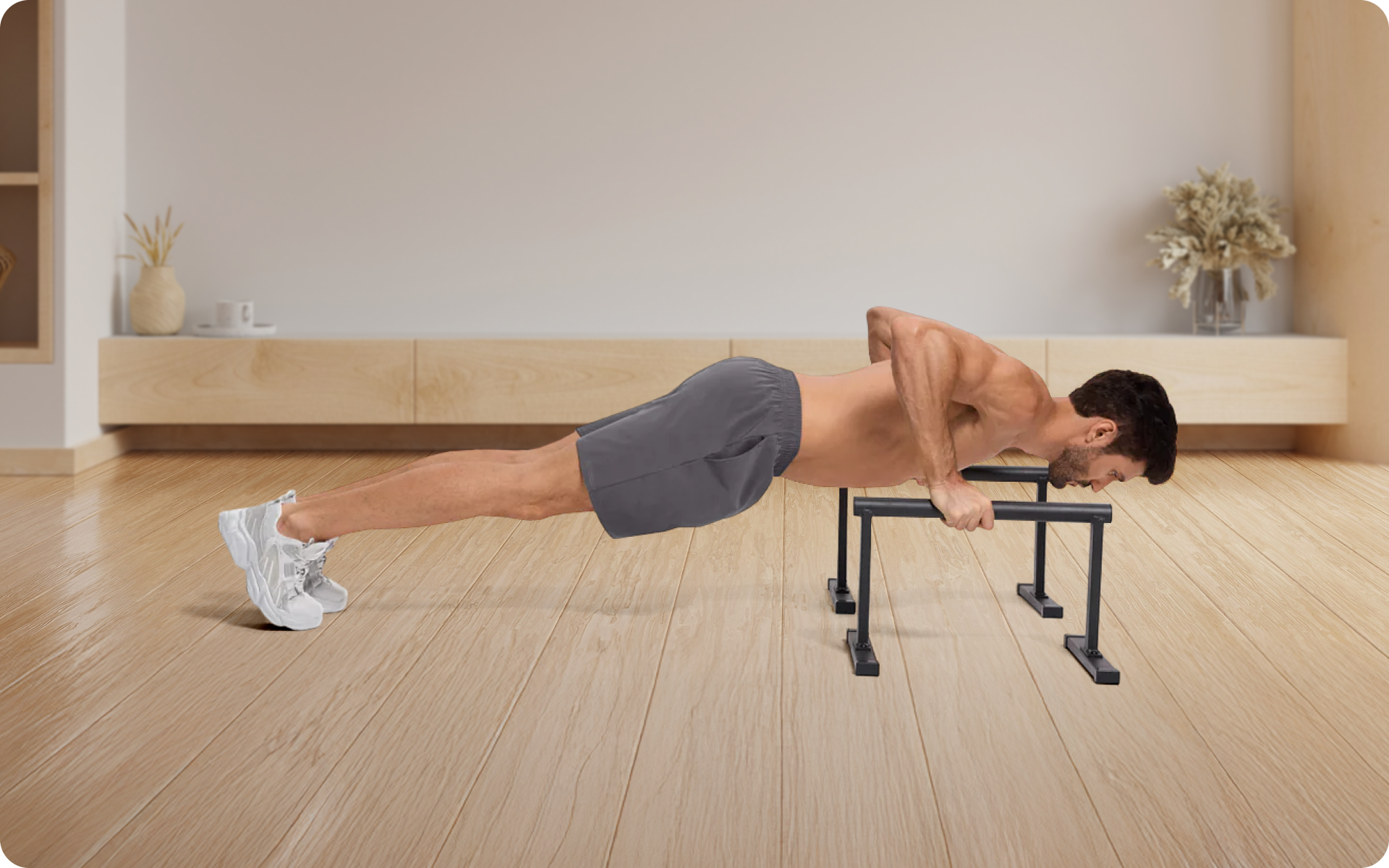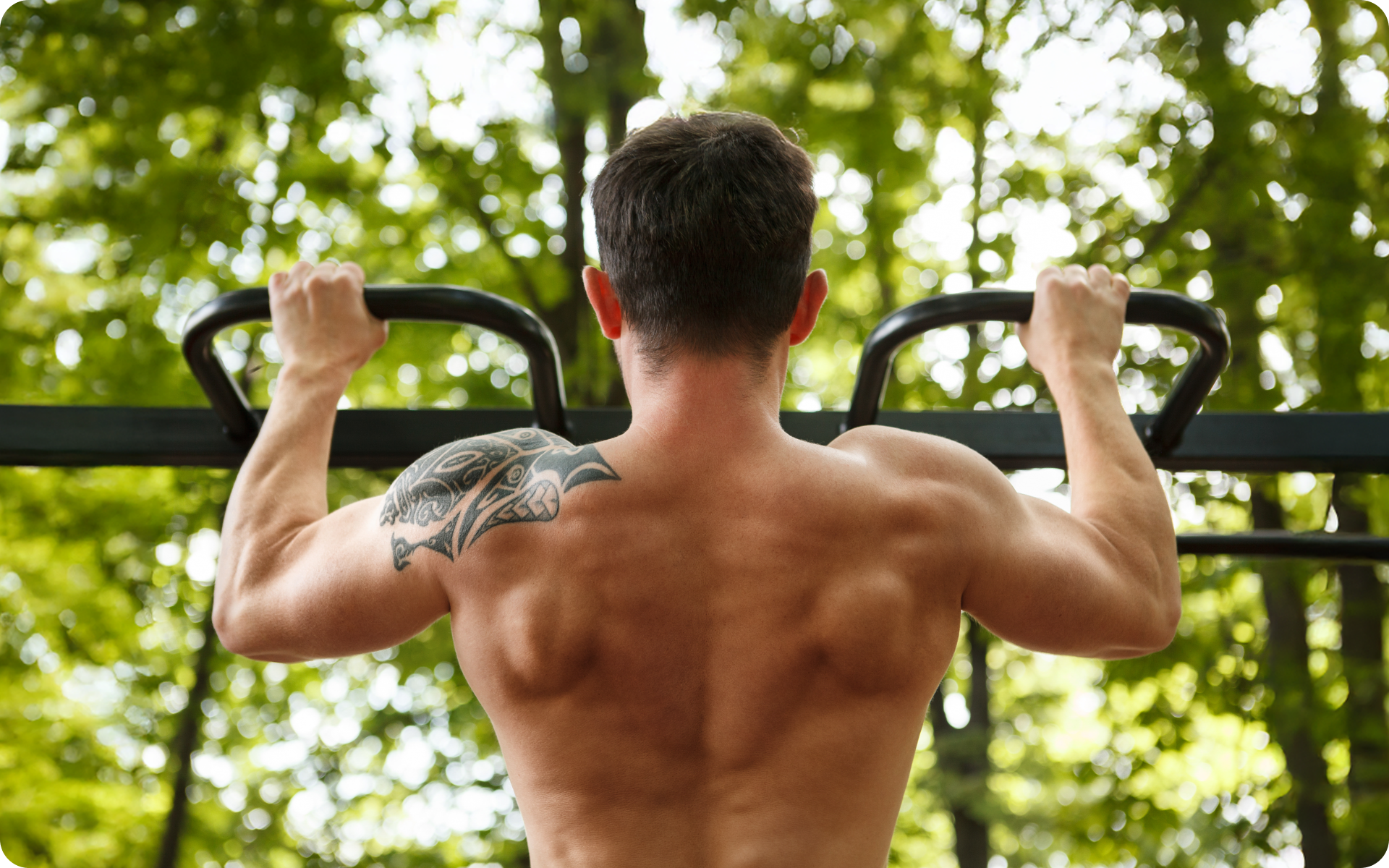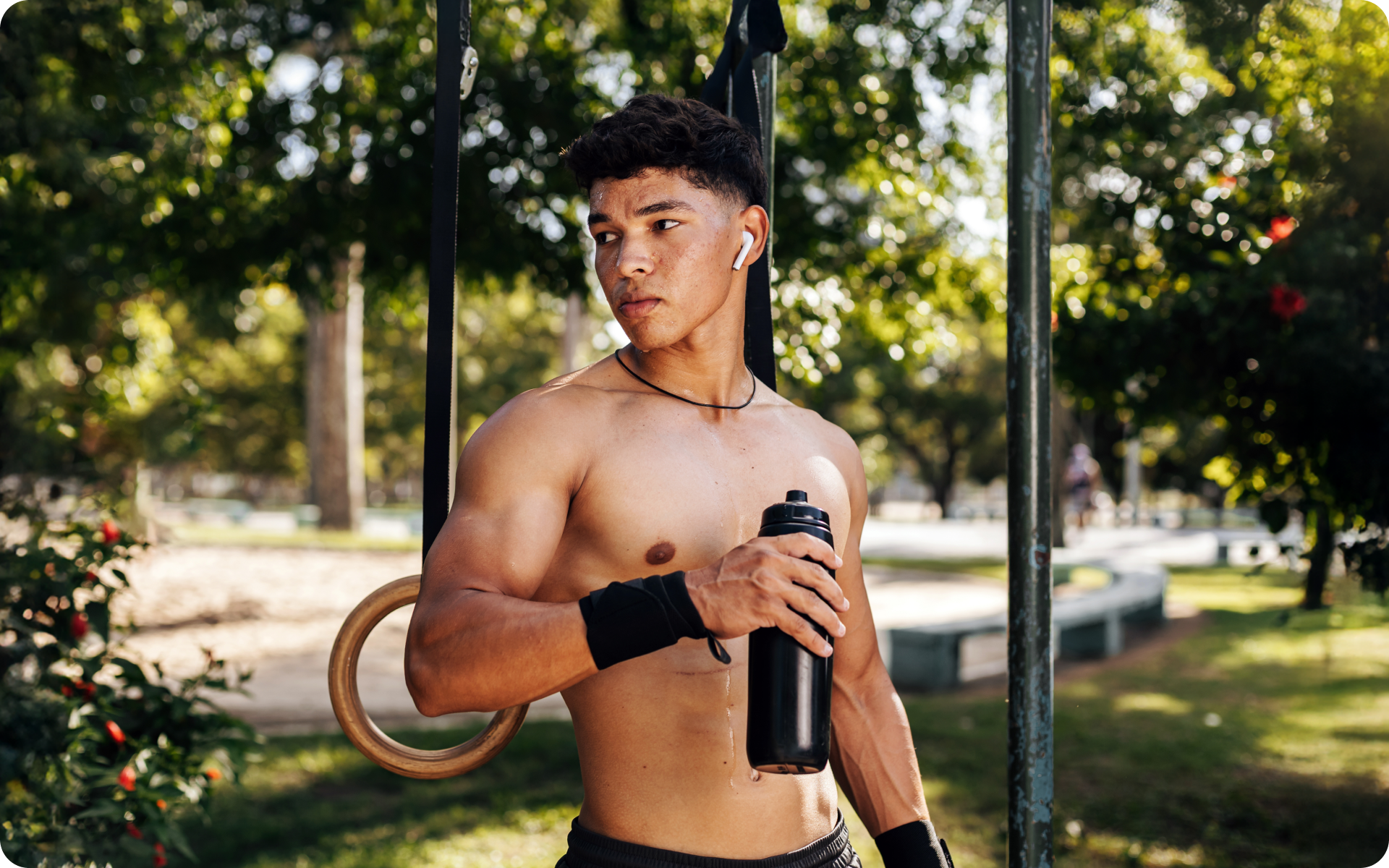Building a lean, functional physique doesn’t always require weights or machines. If you’re looking for a fresh challenge, want to improve overall movement, or are trying to master control over your body weight, calisthenics may be the perfect fit.
Transitioning from traditional weight training to calisthenics can also help prevent plateaus. This bodyweight approach trains your body to work as a unified system, enhancing aesthetics and real-world performance.
This guide will walk you through eight essential calisthenics exercises that are designed specifically for men who are aiming to build a lean physique.
We’ll focus on proper technique to ensure progress and build a lean, sculpted physique.
Is Calisthenics Harder than the Gym?
The answer to whether calisthenics is harder than gym training isn’t straightforward. It depends on how “hard” is defined and, more importantly, your individual perspective, fitness level, and goals. Both forms of exercise bring their own challenges and benefits.
Calisthenics demands a higher level of body awareness and control. Movements such as push-ups, pull-ups, and levers aren’t just about strength – they require stability, balance, and mobility. For a beginner, mastering these bodyweight exercises can feel tough because they aren’t as easily customizable as lifting a lighter weight in the gym. Discover the science behind calisthenics transformation in one of our earlier articles.
On the flipside, gym training offers predictable progression. Resistance machines and free weights allow you to gradually increase the load in small, controlled increments. For many, this makes gym training feel more accessible at first. However, lifting heavy weights requires proper technique to avoid injury. This technical aspect can present its own challenges, especially under a loaded barbell.
However, progression in calisthenics is more skill-based. For example, moving from a regular pull-up to a muscle-up is a leap that combines strength, coordination, and explosive power. It’s not as simple as just “adding weight”. It’s about mastering movement patterns in a way that often takes more time and patience.
Calisthenics also calls for functional strength. Exercises use multiple muscle groups at once, mimicking everyday movements. This can make it feel harder if you’re used to machines isolating single muscles in the gym.
Ultimately, neither method is universally harder. What feels challenging will depend on what you’re used to, what your goals are, and how much effort you’re ready to put into learning and perfecting. Both calisthenics and gym training can push you to your limits – they just do it in different ways.
Is Calisthenics Good for Big Guys?
Calisthenics can work for bigger guys, but it comes with unique challenges. A major factor to consider is relative strength – this refers to how strong you are in relation to your body weight. Calisthenics is heavily reliant on this as exercises such as pull-ups, dips, and push-ups use your body as resistance. Naturally, the more you weigh, the tougher these movements can feel.
For larger individuals, being lean is often an advantage as this means they’re big, but with low body fat and high muscle mass. This can make calisthenics easier.
Excess body fat increases the load you’re lifting.
BetterMe will shake off your mental funk, rid you of your energy-zapping habits, and help you sculpt the body of your dreams. Intrigued? Hurry up and change your life for the better!
For example, a 200-pound person with low body fat will often find exercises easier than someone of the same weight but with a higher fat percentage. Muscle drives strength, while fat increases resistance without adding force.
This doesn’t mean calisthenics is off-limits if you’re bigger. It simply means you need to start smart. Begin with modified versions of exercises. For example, incline push-ups instead of standard push-ups or resistance bands to assist with pull-ups. These adjustments reduce the resistance, which helps you build strength progressively.
Read more: V-Shaped Body Training Plan To Build Strength And Proportion
Can You Build Muscle with Just Calisthenics?
You can build muscle with just calisthenics. Like weightlifting, bodyweight training follows the same basic principles of muscle growth (1). It’s all about how you approach your exercises and how you challenge your muscles over time. Uncover the surprising benefits of calisthenics workout for men in our past article.
Here are the key mechanisms behind muscle growth through calisthenics:
1. Progressive Overload
To build muscle, you must continually challenge your muscles by increasing the resistance or difficulty of your exercises.
With calisthenics, this comes from:
- Advancing to harder variations of moves, such as progressing from knee push-ups to one-arm push-ups.
- Increasing the number of reps or sets.
- Adding weight by using a weighted vest or backpack.
2. Time Under Tension (TUT)
This refers to how long your muscles are under strain during an exercise. Longer tension increases the muscle-building stimulus.
Calisthenics uses TUT by:
- Slowing down the tempo of exercises. For example, lowering yourself slowly during a push-up.
- Holding positions such as a plank or an isometric hold in a pull-up.
3. Muscle Activation
Compound movements in calisthenics activate multiple muscle groups at once. This means more muscles are engaged, which leads to growth (2).
Exercises such as push-ups and pull-ups work the chest, shoulders, back, and arms simultaneously for comprehensive development.
4. Eccentric Loading
Eccentric movements focus on the “lowering” phase of an exercise, where muscles lengthen under load. Slowing this phase down has been shown to contribute significantly to muscle growth (3).
Examples of the eccentric portions of common exercises include the descent in a pull-up or lowering yourself from a dip. Essentially, slowing down the portion of an exercise that you are working with gravity (not against it) will increase time under tension and total muscle recruitment, contributing to muscle hypertrophy.
5. Muscle Fiber Recruitment
Exercises that require balance or coordination recruit stabilizing muscles along with major muscle groups.
Advanced movements such as planches or front levers stimulate deeper, often underutilized muscles, which can lead to new gains.
6. Volume and Recovery
Consistently performing high-volume training (multiple sets and reps) ensures enough workload for muscle growth.
Proper recovery between sessions is essential to allow muscles to repair and grow stronger (4).
What Is a Men’s Calisthenics Workout Plan to Get Ripped?
To build a lean, muscular physique, this men’s calisthenics workout plan combines strength training and fat-burning elements. The workout is divided into two parts – upper-body and lower-body exercises. Here’s the full plan:
Workout Plan Overview
Format: Upper/lower body split
Exercise Count: 8 total
Structure:
Day 1 – Upper body
Day 2 – Lower body
Day 3 – Rest or light active recovery
Repeat.
Reps/Rest: Perform 3 sets per exercise. Each set should leave you 1-2 reps shy of failure. Rest 60-90 seconds between each set and 2-3 minutes between exercises.
Fat-Burning Element (optional): Add a 10-15 minute HIIT session post-workout or substitute with a brisk bodyweight circuit.
Upper-Body Workout (Day 1)
- Pull-Ups – 8-12 reps
- Push-Ups – 12-15 reps
- Dips – 10-12 reps
- Plank-to-Shoulder Taps (Core) – 30 seconds per side
Our previous post goes into great detail about the calisthenics exercises for biceps.
Lower-Body Workout (Day 2)
- Bodyweight Squats – 12-15 reps
- Lunges – 12 reps per leg
- Hip Bridges – 12-15 reps
- Mountain Climbers (Core and Cardio) – 30-45 seconds
Step-by-Step Exercise Instructions
1. Pull-Ups
- Grab a pull-up bar with your palms facing away from you, approximately shoulder-width apart.
- Start in a dead hang with your arms fully extended.
- Pull yourself up until your chin is above the bar.
- Lower yourself back down in a controlled motion. Repeat.
Tip: Can’t perform a full pull-up yet? Use a resistance band for support or try jumping pull-ups.
2. Push-Ups
- Start in a high plank position with your hands slightly wider than shoulder-width.
- Keep your body in a straight line from your head to your heels.
- Lower your chest to just above the ground with your elbows at a ~45° angle.
- Push back up to the starting position.
Tip: Modify by doing push-ups on your knees or on an incline if necessary.
3. Dips
- Use parallel bars or a secure surface such as two sturdy chairs.
- Support your body weight with your arms extended and feet off the ground.
- Bend your elbows to lower your body until your shoulders are below your elbows.
- Push back up until your arms are straight.
Tip: Keep your chest slightly forward to engage the chest muscles more.
4. Plank-to-Shoulder Taps
- Start in a high plank position with your core tight.
- Lift your right hand and tap your left shoulder, keeping your hips stable.
- Return your hand and repeat with your left hand tapping your right shoulder.
Tip: Engage your abs to prevent your hips from rocking side to side.
5. Bodyweight Squats
- Stand with your feet shoulder-width apart, your toes slightly pointing out.
- Lower your hips back and down until your thighs are parallel to the ground.
- Push through your heels to return to standing.
Tip: Keep your chest upright and your knees in line with your toes.
6. Lunges
- Take a big step forward with your right leg.
- Lower your body until your right thigh is parallel to the ground and your back knee is just above the floor.
- Push back up to the starting position and switch legs.
Tip: Engage your core for balance.
7. Hip Bridges
- Lie on your back with your knees bent and your feet flat on the ground, shoulder-width apart.
- Push through your heels as you lift your hips until your body forms a straight line from your shoulders to your knees.
- Squeeze your glutes at the top, then lower back down.
Tip: Avoid overextending your lower back.
8. Mountain Climbers
- Start in a high plank position.
- Drive your right knee toward your chest, then quickly switch legs, bringing your left knee in as your right leg extends back.
- Keep switching legs in a running motion.
Tip: Go fast for a cardio effect, but remain in control to avoid losing form.
Read more: Calisthenics Workout Plan for Men Who Want to Get Lean
Can I Do Calisthenics Every Day?
Yes, you can do calisthenics every day, but it depends on how you structure your workouts. Daily exercise has its benefits, but recovery is essential for muscle repair and long-term progress.
The Benefits of Daily Calisthenics
- Improved Skill and Technique: Repeating movements daily can improve coordination and muscle memory. This is helpful for mastering advanced exercises such as handstands or planches.
- Consistent Caloric Burn: Daily activity increases energy expenditure, which can help with fat loss.
- Enhanced Mobility and Flexibility: Gentle, daily movement can keep your joints healthy and reduce stiffness.
The Risks of Overtraining
Exercising too often without proper rest can lead to overtraining. Overtraining occurs when muscles, tendons, ligaments, bones, or any other body structures don’t get enough time to recover (5), which can cause:
- Decreased Performance: You may feel weaker or find it more difficult to progress.
- Higher Injury Risk: Overworked muscles and joints are more prone to strains.
- Fatigue and Burnout: Persistent tiredness, both physical and mental, can result from overtraining.
Research has highlighted the importance of recovery for muscle growth (6). Strength training, including calisthenics, causes microscopic tears in muscle fibers. These fibers heal and grow stronger during rest. Without sufficient recovery, your muscles can’t fully repair (7).
General guidelines recommend 48 hours of rest for the same muscle group after intense strength training (8). However, lighter activity or active recovery (such as stretching or mobility work) on rest days can still promote recovery by improving blood flow (9).
Reasons why BetterMe is a safe bet: a wide range of calorie-blasting workouts, finger-licking recipes, 24/7 support, challenges that’ll keep you on your best game, and that just scratches the surface! Start using our app and watch the magic happen.
If you want to train every day, you must manage volume, intensity, and muscle group rotation:
Focus on Different Muscle Groups Each Day
For example:
- Day 1: Upper body (pull-ups, push-ups)
- Day 2: Lower body (squats, lunges)
- Day 3: Core (planks, leg raises)
Vary the Intensity
Alternate hard workout days with light, low-intensity sessions. Include active recovery workouts such as yoga or mobility drills.
Listen to Your Body
If you feel sore, fatigued, or mentally drained, take a rest or go easy. Rest is essential, even in a consistent routine.
What Is the 80/20 Rule in Calisthenics?
The 80/20 rule, also known as the Pareto principle, is about focusing on the exercises that deliver the greatest results. This means that 20% of your effort or exercise produces 80% of your progress. This applies to calisthenics as not all movements are equally effective. Prioritizing the most efficient exercises is key.
In calisthenics, compound exercises provide the biggest bang for your buck. These movements work multiple muscle groups at once. By focusing on them, you build strength and muscle faster than with isolation exercises.
For example:
- Pull-ups work your back, biceps, and core.
- Push-ups target your chest, shoulders, triceps, and core.
- Dips hit the triceps, chest, and shoulders.
- Squats train the quads, hamstrings, and glutes.
These exercises are part of the 20% that produces most of your results. They build functional strength and improve overall fitness.
Research supports the emphasis on compound movements. Studies have shown that these exercises activate more muscle fibers adequately even in untrained areas, which leads to greater strength and muscle growth (10). They also save time by training multiple areas in one exercise.
For example:
- A pull-up recruits more upper-body muscles than a biceps curl.
- Push-ups engage core muscles, unlike a machine bench press.
Efficiency is the key when aiming for progress.
The 80/20 rule keeps training simple and results-driven, but it’s not a strict guideline. You can still incorporate isolation exercises, but the majority of your workouts should focus on compound movements for optimal results. As always, listen to your body and make adjustments as required.
Not necessarily. While many calisthenics athletes are lean due to low body fat, they can also build significant muscle mass. Their physique often depends on diet, training intensity, and genetics. Calisthenics athletes are typically very strong, particularly in relative strength (strength compared to their body weight). They excel in exercises such as pull-ups, muscle-ups, and planches, showcasing exceptional body control and functional strength. No, 25 isn’t too old. Calisthenics is suitable for all ages and fitness levels (11). Starting at 25 can still lead to impressive strength gains and a fitter body with consistency and proper progression. Yes, strength training such as calisthenics can help boost your testosterone levels (12), particularly when you engage in high-intensity exercises that recruit multiple muscle groups, such as pull-ups and push-ups.Frequently Asked Questions
Are calisthenics guys skinny?
How strong are calisthenics guys?
Is 25 too old to start calisthenics?
Is calisthenics good for testosterone?
The Bottom Line
A men’s calisthenics workout is a highly effective way to build a lean, muscular, and functional physique using nothing but your body weight. By prioritizing compound exercises, maintaining proper form, and remaining consistent, you can achieve incredible results without the need for a gym.
